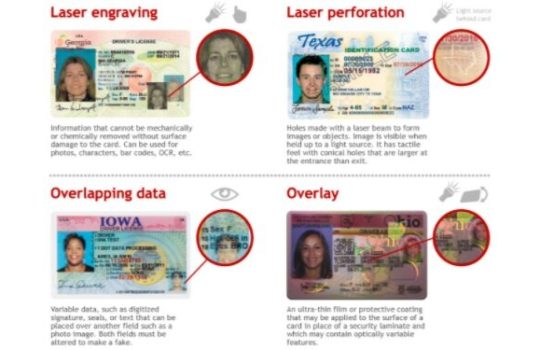How To Tell If Id Is Fake
2024-04-03 2024-04-03 15:36How To Tell If Id Is Fake
How To Tell If Id Is Fake
Russian Fake Passport
West Virginia Fake Driver License
Maldives Fake Passport
Green Card Usa Fake
How to Tell if an ID is Fake
Identification cards are vital documents that we use in our daily lives for various purposes, such as proving our age, identity, or right to access certain services. However, with the rise of counterfeit IDs, it has become increasingly challenging to distinguish between genuine and fake identification cards. Fake IDs pose serious risks, as they can be used for illegal activities, underage drinking, or gaining unauthorized access to restricted areas.
To protect yourself and others from the dangers associated with fake IDs, it is essential to know how to identify them. In this article, we will discuss some common signs that can help you determine whether an ID is fake or genuine.
1. Check the quality of the ID
One of the first things to look for when examining an ID is its overall quality. Genuine IDs are usually made of high-quality materials, such as PVC or polycarbonate, which are durable and tamper-resistant. Fake IDs, on the other hand, are often made of low-quality materials, such as paper or laminated cardboard, which can easily be damaged or altered.
Inspect the ID for any signs of poor craftsmanship, such as uneven edges, smudged text, or blurry images. Genuine IDs are typically produced using advanced printing technology, so the text and images should be sharp and clear. If the ID looks cheaply made or poorly designed, it is likely a fake.
2. Verify the security features
Most genuine IDs contain several security features that are designed to prevent counterfeiting and tampering. These features may include holograms, UV printing, microprinting, and watermarks. Before accepting an ID as valid, check for these security features to ensure its authenticity.
Hold the ID up to the light to see if it contains a holographic image or watermark. Use a UV light to check for UV printing, which is invisible to the naked eye but appears under ultraviolet light. Examine the fine print on the ID to see if it contains microprinting, which is often used to deter counterfeiters. If the ID lacks these security features or they appear to be fake or altered, it is likely a counterfeit.
3. Look for inconsistencies
Fake IDs are often produced by amateurs or criminals who are trying to mimic the design of a genuine ID. As a result, fake IDs may contain inconsistencies or errors that can give them away. When examining an ID, look for any discrepancies in the information, such as mismatched fonts, misspelled words, or incorrect dates.
Pay close attention to the details on the ID, such as the name, date of birth, address, and expiration date. Make sure that the information is accurate and matches the appearance of the person presenting the ID. If you notice any inconsistencies or errors, it is a red flag that the ID may be fake.
4. Check the photo
Another important element to consider when verifying an ID is the photo of the cardholder. Genuine IDs typically feature a high-quality, professionally taken photograph that accurately represents the person’s appearance. Fake IDs, on the other hand, may contain a low-quality or poorly cropped photo that does not match the person presenting the ID.
Examine the photo on the ID closely to see if it appears to be altered or digitally manipulated. Look for any signs of tampering, such as pixelation, blurriness, or unnatural lighting. Compare the photo to the person presenting the ID to see if there are any noticeable differences in their appearance. If the photo does not look authentic or if it does not match the individual, the ID is likely fake.
5. Test the ID
If you are still unsure about the authenticity of an ID, you can perform some simple tests to verify its legitimacy. One common test is the bend test, in which you gently bend the ID to see if it is made of a durable material like PVC or polycarbonate. Genuine IDs will usually flex but not break, while fake IDs made of paper or laminated cardboard may tear or crease under pressure.
You can also conduct a weight test by comparing the weight of the ID to that of a known genuine ID. Fake IDs may feel lighter or flimsier than genuine IDs due to the lower quality of materials used in their production. Additionally, you can use a magnifying glass to examine the fine details on the ID, such as the microprinting or holograms, to see if they are authentic.
By following these tips and guidelines, you can improve your ability to detect fake IDs and protect yourself from potential risks. Remember that fake IDs can have serious consequences, so it is important to be vigilant and cautious when verifying someone’s identity. If you suspect that an ID is fake, do not hesitate to report it to the appropriate authorities and take steps to prevent fraudulent activity. With a keen eye for detail and a willingness to investigate suspicious IDs, you can help maintain the integrity and security of identification documents.









